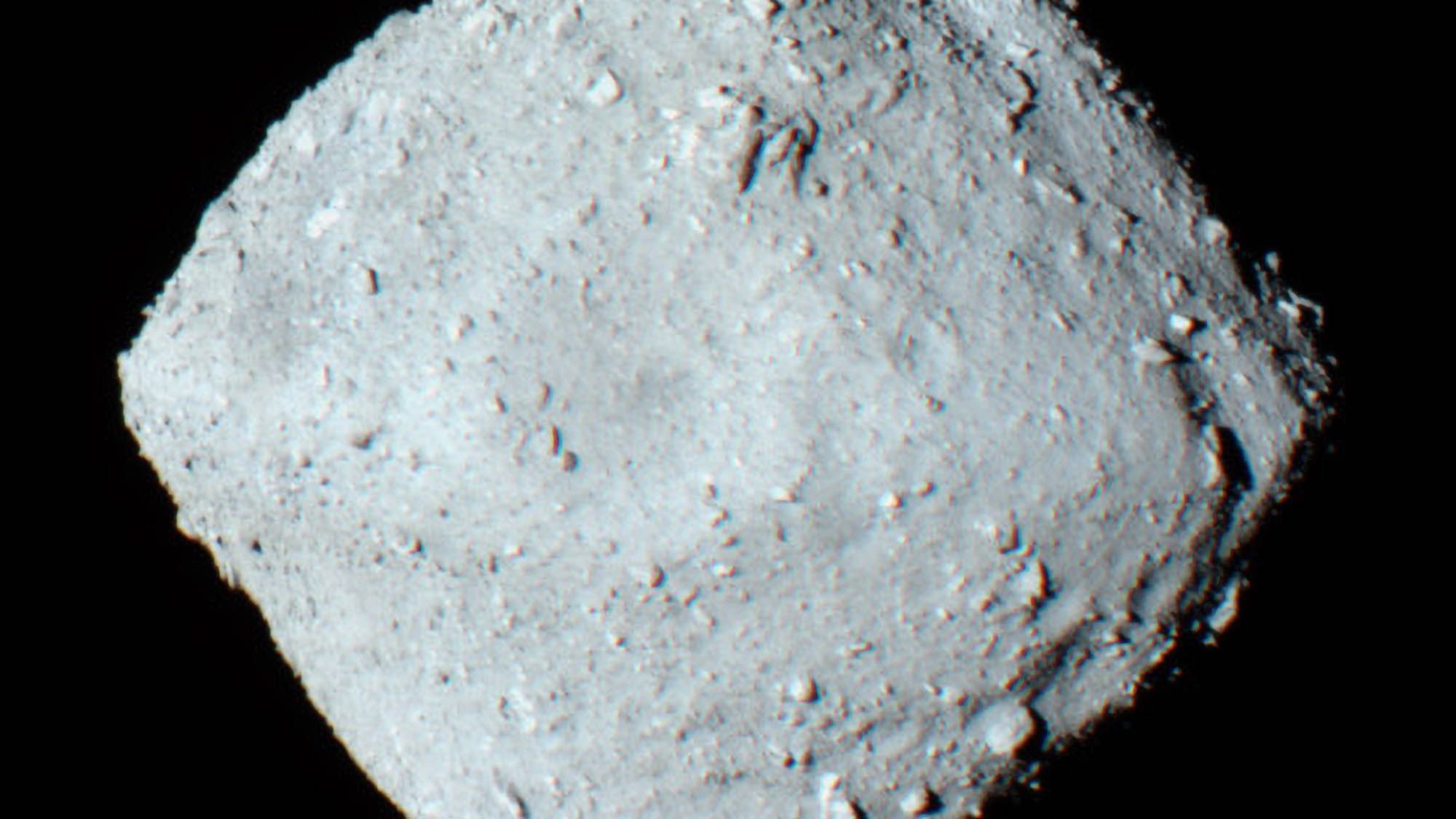International researchers have revealed that the Ryugu asteroid originated from the outer edge of the Solar System beyond the orbits of Jupiter and Saturn.
Iron isotopes from Ryugu’s rock samples suggested that the asteroid’s construction significantly differed from typical carbon-rich meteorites in the Solar system.
Now scientists from the Max Planck Institute for Solar System Research (MPS) and the Georg-August-University Gottingen in Germany say that this means it was formed right on the edges of Outer Space.
Japan’s Aerospace Exploration Agency (JAXA) sent a probe called Hayabusa2 to the asteroid in December 2014.
It surveyed the 435-metre rock for about a year and a half before scooping up pieces in 2018 and bringing them back to Earth for experts to study in 2020.
The probe brought back five grammes of rocky material, only the second time that rock samples were ever retrieved from an asteroid.
Analysis revealed that the samples were granular and loose and that their minerals had reacted with water over a long period of time.
They also confirmed that the rounded double pyramid-shaped and one-kilometre-in-diameter (0.6 miles) wide asteroid contains amino acids – essential building blocks for life – and other complex organic molecules.
According to the researchers, asteroids of such kind are newcomers to the inner Solar System and have spent most of their existence in the belt between the orbits of Mars and Jupiter.
University of Chicago researcher and first author of the study Timo Hopp said in a statement obtained by Newsflash: “All studies indicate that Ryugu, like the carbonaceous chondrites, is a child of the outer Solar System.”
But Hopp could not clarify whether Ryugu was formed near Jupiter and Saturn or even further away from the Sun.
To put an end to this dilemma researchers examined iron isotopes from four samples of the asteroid in contrast to samples of 13 different meteorites from different meteorite groups.
The samples were reportedly prepared in Japan before they were transferred to Chicago.

The scientists then analysed the samples using a multicollector plasma mass spectrometer and determined the differences in the ratios of various iron isotopes within a few parts per million.
Obtained results showed that these ratios differed significantly from that of most of the studied meteorites except of the CI chondrites, also known as Ivuna-type meteorites.
MPS director and co-author of the study Thorsten Kleine said: “The ratio of certain iron isotopes is an excellent marker to distinguish some of these groups from each other by their places of origin.”
Hopp added: “There is a striking relationship between the asteroid Ryugu and the comparatively rare meteorites of the CI group.
“Our measurements demonstrate that Ryugu and Ivuna-type meteorites formed in the same region of the early Solar System, and that this region does not coincide with the formation site of other carbonaceous chondrites.”
Georg-August University Gottingen professor from the Department of Geochemistry and Isotope Geology Dr Andreas Pack said: “All in all, there is much to suggest that with Ryugu and the Ivuna-type meteorites we have found remnants of early planetary bodies that formed at the very edge of the Solar System.”
The study was published in the peer-reviewed multidisciplinary open-access scientific journal Science Advances on 20th October 2022.
To find out more about the author, editor or agency that supplied this story – please click below.
Story By: Georgina Jadikovska, Sub-Editor: Marija Stojkoska, Agency: Newsflash
The Ananova page is created by and dedicated to professional, independent freelance journalists. It is a place for us to showcase our work. When our news is sold to our media partners, we will include the link here.




